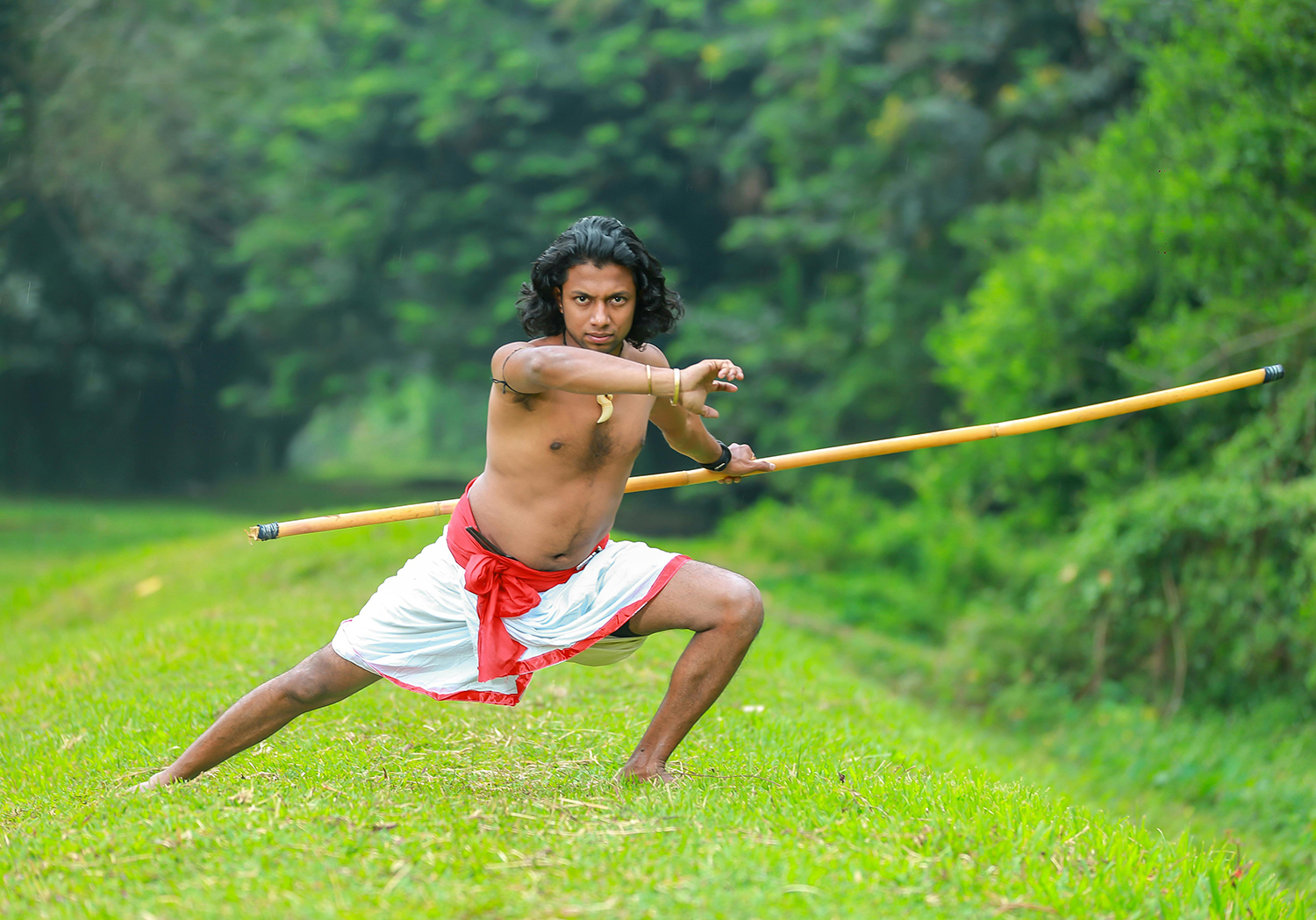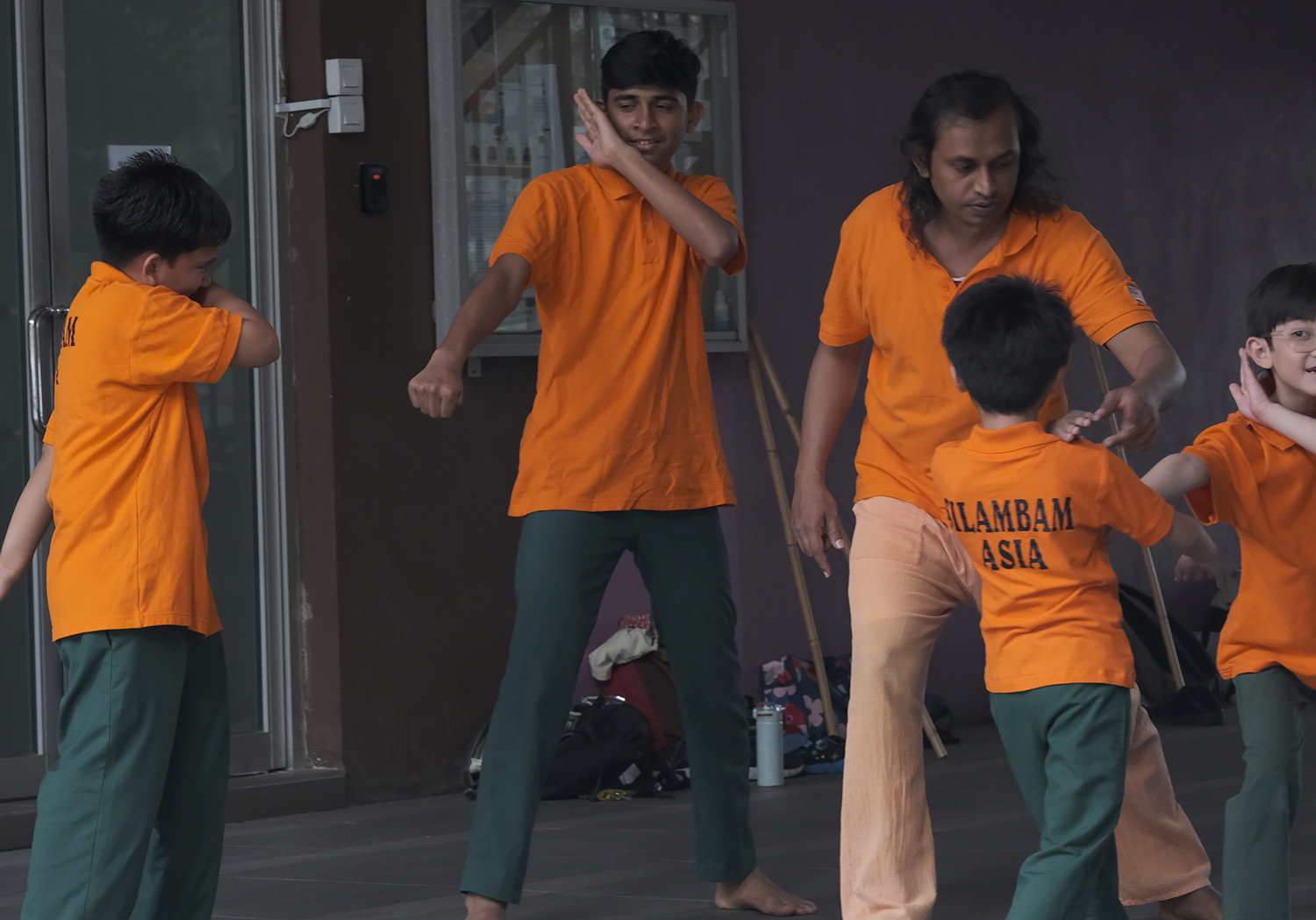ARTICLE
Silambam
Originating in ancient Southern India, silambam is a form of warfare that involves fighting with a bamboo staff developed for self-defence. The name silambam, comes from the Tamil word silam, meaning hills. This reference to hills may be the reason that the art of silambam was particularly useful in the Kurinji hills to keep wild animals away. The primary weapon used for the art form is a particular kind of yellow bamboo known as silambambu, but other weapons may also include swords, spears, daggers and knives.
The origin of silambam is unclear but references to silambam can be found in Sangam literature, for instance in the epic, Silapathikaram. Also, historical references elucidate its use by the rulers of the Chera, Chola and Pandya kingdoms. Most notably the soldiers in the army of the Tamil ruler Veerapandiya Kattabomman, defended their kingdom against the British using silambam. Scholars note that the city of Madurai was an important centre in spreading the art form to other parts of Southeast Asia, Europe and the Middle East and the silambam staff was exported to these parts of the world. Some accounts also state that the shaolin style of martial arts is also a derivation of silambam, and was brought to China by Bodhidharma in 526 AD.
The basics of the fight come from its footwork, known as chuvadus, of which there are eighteen types and these are taught to the students before they are allowed to move on to the use of sticks. Unlike other popular stick-based martial art forms, the grip used in silambam is known as a hammer grip (main hand facing down behind the secondary hand that faces up) instead of a poker grip where both hands face down. This, in combination with fast and agile wrist movement and footwork, is seen as the core of this art form. In some cases, along with the stick, a shield made of bamboo or wicker may also be used that is secured on the wrist or forearm.
The art form is performed on a circular, hard surface which is 40–50 feet in diameter. The match can be of three kinds: a duel to the finish, where the first opponent to lose their stick loses; a duel where the participants must guard an object placed at their foot; and lastly, the most popular, where the opponent must try and get the opponent’s stick to touch them the least number of times in order to win. For the last variant, the stick is laced with a sticky substance that gets left behind on the opponent's body when touched. Since the staff is the most important part of combat, it may vary in length based on the height of the fighter and is approximately 1–1.25 inches in diameter. “Torch silambam” or panthukol, where cloth balls are lit on fire, are used by fire dance performers at events or festivals. In another variant, the two opponents have their sticks coated in two different coloured powders and the winner of the combat is determined by the person left with the least marks of colour on their body.
Compared to other martial arts, silambam wasn’t always regularised since it has mostly been passed on through a guru-shishya (teacher-student) system. Recently it adapted the belt system, like karate, where silambam begins with a white belt and ends with a black — ash, yellow, orange, green, blue, purple and brown come in between. Additionally in an effort to popularise and promote the martial art form, the World Silambam Federation was founded in 2010 in Chennai.
Bibliography
Our website is currently undergoing maintenance and re-design, due to which we have had to take down some of our bibliographies. While these will be re-published shortly, you can request references for specific articles by writing to hellomapacademy@map-india.org.








